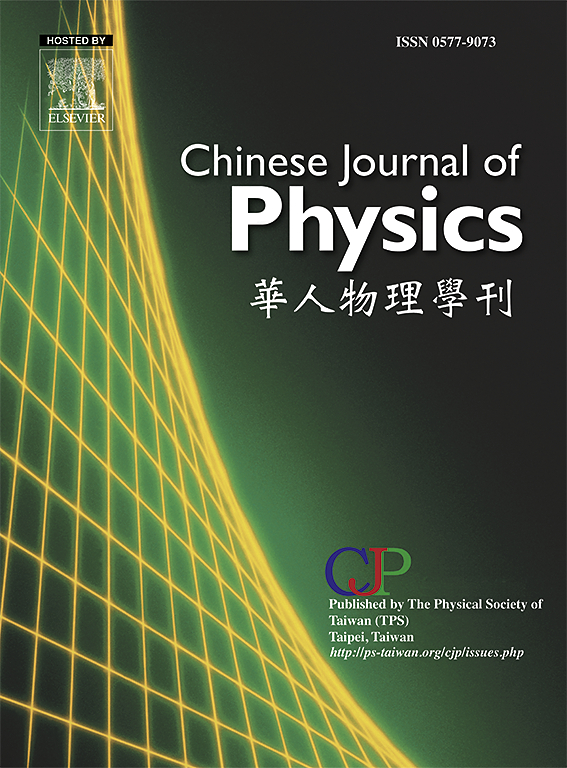Dynamical response in an electromechanical arm driven by temperature-dependent neural circuit
IF 4.6
2区 物理与天体物理
Q1 PHYSICS, MULTIDISCIPLINARY
引用次数: 0
Abstract
The thermosensitive neurons can detect changes in external temperature, and the external physical information is converted into neural signals. The external temperature is translated into an equivalent electrical stimulus, and the excitability of these neurons is controlled by adjusting the external electrical signal. These neurons exhibit a certain degree of adaptability, inducing appropriate discharge patterns only when subjected to external stimuli within a specific temperature range. Therefore, thermosensitive neurons formed by temperature regulated neural circuits can be used to study signal processing of thermosensitive neurons and control of mechanical arm. A temperature sensing mechanical arm system is constructed based on neural circuits in this article, and the influence of temperature on the dynamic behaviors of a mechanical arm system regulated by thermosensitive neurons is studied. Numerical simulations are performed to research the effect of external stimulation current and temperature on pattern formation. The bifurcation analysis of the membrane potential reveals the conversion in electrical activity and pattern selection. The bifurcation analysis of membrane potential reveals the mode switching of electrical activity and its impact on the displacement of the mechanical arm. The results indicate that as the temperature changes, the membrane potential exhibits different discharge patterns, which in turn affect the maximum displacement of the mechanical arm. The coupling between neural circuits and mechanical arm promotes effective signal propagation in the system. It is found that there is an appropriate temperature range that allowed the mechanical arm of the coupled system to move steadily back and forth. The research results confirm that external temperature can affect the firing mode of neurons and control the displacement of the mechanical arm.

由温度相关神经回路驱动的机电臂的动态响应
热敏神经元可以检测外部温度的变化,并将外部物理信息转化为神经信号。外部温度被转化为等效的电刺激,通过调整外部电信号来控制这些神经元的兴奋性。这些神经元表现出一定程度的适应性,只有在特定温度范围内受到外部刺激时才会诱发适当的放电模式。因此,由温度调节神经回路形成的热敏神经元可用于研究热敏神经元的信号处理和机械臂的控制。本文构建了基于神经回路的温度传感机械臂系统,并研究了温度对热敏神经元调控机械臂系统动态行为的影响。通过数值模拟研究了外部刺激电流和温度对图案形成的影响。膜电位的分岔分析揭示了电活动和模式选择的转换。膜电位分岔分析揭示了电活动的模式转换及其对机械臂位移的影响。结果表明,随着温度的变化,膜电位表现出不同的放电模式,进而影响机械臂的最大位移。神经回路和机械臂之间的耦合促进了信号在系统中的有效传播。研究发现,在一个合适的温度范围内,耦合系统的机械臂可以稳定地前后移动。研究结果证实,外部温度可以影响神经元的发射模式,并控制机械臂的位移。
本文章由计算机程序翻译,如有差异,请以英文原文为准。
求助全文
约1分钟内获得全文
求助全文
来源期刊

Chinese Journal of Physics
物理-物理:综合
CiteScore
8.50
自引率
10.00%
发文量
361
审稿时长
44 days
期刊介绍:
The Chinese Journal of Physics publishes important advances in various branches in physics, including statistical and biophysical physics, condensed matter physics, atomic/molecular physics, optics, particle physics and nuclear physics.
The editors welcome manuscripts on:
-General Physics: Statistical and Quantum Mechanics, etc.-
Gravitation and Astrophysics-
Elementary Particles and Fields-
Nuclear Physics-
Atomic, Molecular, and Optical Physics-
Quantum Information and Quantum Computation-
Fluid Dynamics, Nonlinear Dynamics, Chaos, and Complex Networks-
Plasma and Beam Physics-
Condensed Matter: Structure, etc.-
Condensed Matter: Electronic Properties, etc.-
Polymer, Soft Matter, Biological, and Interdisciplinary Physics.
CJP publishes regular research papers, feature articles and review papers.
 求助内容:
求助内容: 应助结果提醒方式:
应助结果提醒方式:


